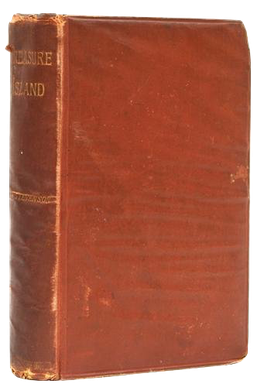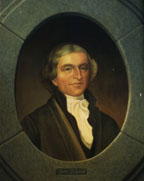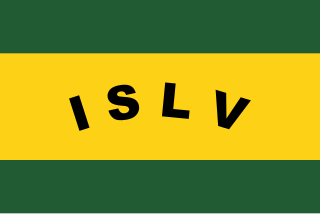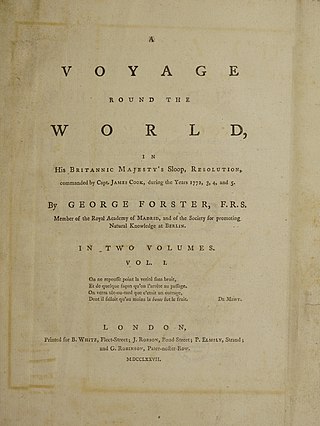
The Cook Islands is a self-governing island country in the South Pacific Ocean in free association with New Zealand. It comprises 15 islands whose total land area is 236.7 square kilometres (91 sq mi). The Cook Islands' Exclusive Economic Zone (EEZ) covers 1,960,027 square kilometres (756,771 sq mi) of ocean.

The history of the Pacific Islands covers the history of the islands in the Pacific Ocean.

Captain James Cook was a British explorer, cartographer and naval officer famous for his three voyages between 1768 and 1779 in the Pacific Ocean and to New Zealand and Australia in particular. He made detailed maps of Newfoundland prior to making three voyages to the Pacific, during which he achieved the first recorded European contact with the eastern coastline of Australia and the Hawaiian Islands, and the first recorded circumnavigation of New Zealand.

Treasure Island is an adventure novel by Scottish author Robert Louis Stevenson, telling a story of "buccaneers and buried gold". It is considered a coming-of-age story and is noted for its atmosphere, characters, and action.

HMS Endeavour was a British Royal Navy research vessel that Lieutenant James Cook commanded to Tahiti, New Zealand and Australia on his first voyage of discovery from 1768 to 1771.

Captain Underpants is an illustrated children's graphic novel series by American author and illustrator Dav Pilkey. The series revolves around two fourth graders, George Beard and Harold Hutchins, living in Piqua, Ohio, and Captain Underpants, an aptly named superhero from one of the boys' homemade comic books, who accidentally becomes real when George and Harold hypnotize their cruel, bossy, and ill-tempered principal, Mr. Krupp. From the third book onwards, Mr. Krupp also possesses superhuman strength, durability and flight as a result of drinking alien "Extra-Strength Super Power Juice".

"Where no man has gone before" is a phrase made popular through its use in the title sequence of the original 1966–1969 Star Trek science fiction television series, describing the mission of the starship Enterprise. The complete introductory speech, spoken by William Shatner as Captain James T. Kirk at the beginning of each episode, is:
Space: the final frontier. These are the voyages of the starship Enterprise. Its five-year mission: to explore strange new worlds; to seek out new life and new civilizations; to boldly go where no man has gone before!

John Ledyard was an American explorer and adventurer.

Geraldine Brooks is an Australian-American journalist and novelist whose 2005 novel March won the Pulitzer Prize for Fiction.

Sydney Parkinson was a Scottish botanical illustrator and natural history artist. He was the first European artist to visit Australia, New Zealand and Tahiti. Parkinson was the first Quaker to visit New Zealand. The standard author abbreviation Parkinson is used to indicate this person as the author when citing a botanical name.

The Leeward Islands are the western part of the Society Islands in French Polynesia, an overseas collectivity of France, in the South Pacific Ocean. They lie south of the Line Islands, east of the Cooks and north of the Austral Islands. Their area is 404 km2 and their population is over 36,000.

Brad Anderson is an American film director, producer and writer. A director of thriller and horror films and television projects, he is best known for directing The Machinist (2004), starring Christian Bale, psychological horror film Session 9 (2001) and The Call (2013), starring Halle Berry. He also produced and directed several episodes of the Fox science fiction series Fringe. Earlier in his career he directed the romantic comedies Next Stop Wonderland (1998) and Happy Accidents (2000).

Anthony Lander Horwitz was an American journalist and author who won the 1995 Pulitzer Prize for National Reporting.

The Society Islands are an archipelago in the South Pacific Ocean that includes the major islands of Tahiti, Moorea, Raiatea, Bora Bora and Huahine. Politically, they are part of French Polynesia, an overseas country of the French Republic. Geographically, they form part of Polynesia.

The first voyage of James Cook was a combined Royal Navy and Royal Society expedition to the south Pacific Ocean aboard HMS Endeavour, from 1768 to 1771. It was the first of three Pacific voyages of which James Cook was the commander. The aims of this first expedition were to observe the 1769 transit of Venus across the Sun, and to seek evidence of the postulated Terra Australis Incognita or "undiscovered southern land".
James Edmond Macdonnell was an Australian novelist. The covers of his novels declare him "Australia's leading novelist of the Navy" and "Australia's greatest novelist of the sea".
Alexander Russell Frater was a British travel writer and journalist. Described by Miles Kington as 'the funniest man who wrote for Punch since the war', Frater is best known for his various books and for documentaries he wrote and produced for the BBC and ABC.

The second voyage of James Cook, from 1772 to 1775, commissioned by the British government with advice from the Royal Society, was designed to circumnavigate the globe as far south as possible to finally determine whether there was any great southern landmass, or Terra Australis. On his first voyage, Cook had demonstrated by circumnavigating New Zealand that it was not attached to a larger landmass to the south, and he charted almost the entire eastern coastline of Australia, yet Terra Australis was believed to lie further south. Alexander Dalrymple and others of the Royal Society still believed that this massive southern continent should exist. After a delay brought about by the botanist Joseph Banks' unreasonable demands, the ships Resolution and Adventure were fitted for the voyage and set sail for the Antarctic in July 1772.

A Voyage Round the World is Georg Forster's report on the second voyage of the British explorer James Cook. During the preparations for Cook's voyage, the expedition's naturalist Joseph Banks had withdrawn his participation, and Georg's father, Johann Reinhold Forster, had taken his place at very short notice, with his seventeen-year-old son as his assistant. They sailed on HMS Resolution with Cook, accompanied by HMS Adventure under Tobias Furneaux. On the voyage, they circumnavigated the world, crossed the Antarctic Circle and sailed as far south as 71° 10′, discovered several Pacific islands, encountered diverse cultures and described many species of plants and animals.

Nomad: In the Footsteps of Bruce Chatwin is a 2019 British documentary film by German director Werner Herzog. It chronicles the life of British travel writer Bruce Chatwin and includes interviews with Chatwin's widow, Elizabeth Chatwin, and biographer Nicholas Shakespeare, as well as detailing Herzog's own friendship and collaboration with the man.


















